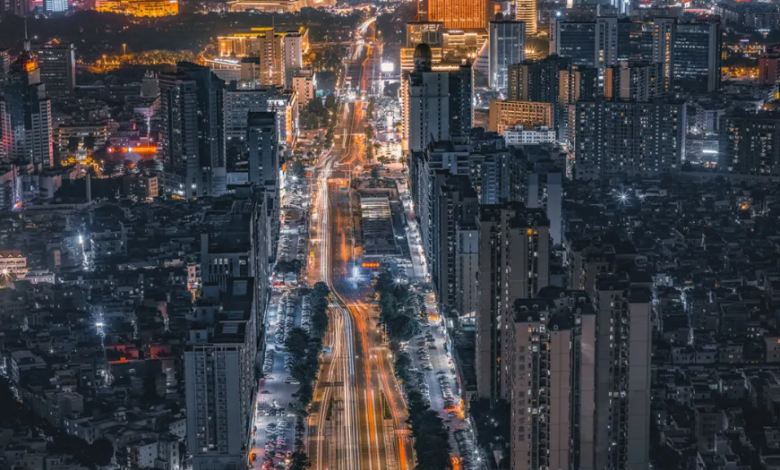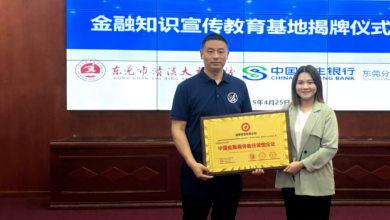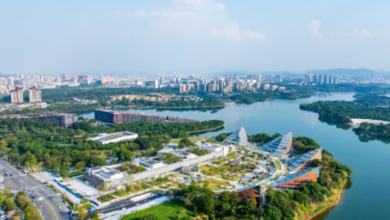Where is Dongguan? A Complete City Map and Area Guide

Where is Dongguan? A Complete City Map and Area Guide
Nestled in the heart of Guangdong Province, China, Dongguan is a dynamic metropolis that bridges the gap between Guangzhou to the north and Shenzhen to the south. Known as the “World’s Factory” for its manufacturing prowess, this city of over 10 million residents is far more than an industrial hub. With a rich cultural heritage, lush green spaces, and a rapidly modernizing urban landscape, Dongguan offers a fascinating blend of tradition and innovation. Whether you’re a business traveler, expat, or tourist, this guide will help you navigate its geography, key districts, and hidden gems.
Location and Overview
Dongguan occupies a strategic position in the Pearl River Delta, one of China’s most economically vibrant regions. It lies approximately 50 kilometers (31 miles) southeast of Guangzhou, 60 kilometers (37 miles) northwest of Shenzhen, and just 80 kilometers (50 miles) from Hong Kong. This prime location has made it a critical node for trade, logistics, and manufacturing.
The city spans 2,460 square kilometers (950 square miles) and is divided into 4 urban districts and 28 towns, each with its own distinct character. Unlike many Chinese cities with a single downtown core, Dongguan’s decentralized layout spreads economic and cultural activities across its towns, creating a polycentric urban structure.
Key Areas and Districts
To explore Dongguan effectively, it helps to break the city into four main zones: the Central Urban Area, Northern Towns, Eastern Towns, and Southern Towns. Below is a detailed breakdown:
1. Central Urban Area: The Modern Heart
This zone includes Nancheng (South City), Dongcheng (East City), Wancheng, and Guancheng, forming the administrative and commercial core.
- Nancheng: Home to government offices, upscale malls like Humen Garment City, and the iconic Dongguan Exhibition Center. The Haojiang River waterfront offers scenic walks.
- Dongcheng: A bustling commercial hub with landmarks such as Dongcheng Walking Street and Shizimen Cultural Square.
- Songshan Lake: Located northeast of the city center, this tech-driven area hosts the Songshan Lake High-Tech Industrial Development Zone, attracting global tech firms and startups. Its namesake lake is a serene retreat with cycling trails and cherry blossoms in spring.
2. Northern Towns: Industry and History
The northern region, including Chang’an, Humen, and Dalang, is a powerhouse of manufacturing and historical significance.
- Humen: Known as the “Gateway to the Pearl River,” Humen is famed for its role in the First Opium War. Visit the Humen Fort and Opium War Museum for a dive into history.
- Chang’an: A major electronics manufacturing base, this town buzzes with factories and international business activity.
3. Eastern Towns: Tradition Meets Nature
Head east to towns like Qingxi, Zhangmutou, and Changping for a mix of natural beauty and cultural heritage.
- Yingzhou Ecological Park (Qingxi): A sprawling green space with lakes, hiking trails, and lotus flower fields.
- Qifeng Park (Zhangmutou): A forested area perfect for hiking and temple visits.
- Changping: Famous for its Cantonese cuisine and traditional lion dance performances.
4. Southern Towns: Cross-Border Connectivity
The southern towns of Tangxia and Fenggang border Shenzhen, making them hotspots for cross-border commerce.
- Tangxia: A growing residential area with expat-friendly communities and international schools.
- Fenggang: Offers easy access to Shenzhen via the Yanluo Metro Line.
Getting Around Dongguan
Dongguan’s transportation network is well-developed but can be challenging for first-time visitors due to its sprawling layout.
- Metro: Two metro lines (Line 2 and Line 1) connect key areas like Dongcheng, Nancheng, and Humen.
- High-Speed Rail: The Guangshen Railway stops at Dongguan Railway Station, linking the city to Guangzhou and Shenzhen in under 30 minutes.
- Bus/Taxi: Buses cover most towns, while ride-hailing apps like Didi are convenient for short trips.
Must-Visit Attractions
- Keyuan Garden: A Qing Dynasty-era classical garden in Guancheng.
- Opium War Museum: A UNESCO-listed site in Humen.
- Songshan Lake: Ideal for cycling, boating, or admiring tech-driven architecture.
- Guanyin Mountain (Dongguan Forest Park): Hike to the 488-meter summit for panoramic city views.
Travel Tips
- Best Time to Visit: October–December for mild weather.
- Language: Mandarin and Cantonese are widely spoken; English is limited outside business zones.
- Accommodation: Stay in Nancheng or Dongcheng for convenience, or choose Songshan Lake for a quieter vibe.
Dongguan’s decentralized structure means every town has its own story. Whether you’re tracing history in Humen, sealing business deals in Chang’an, or unwinding by Songshan Lake, this city promises an experience as diverse as its skyline. Keep this guide handy, and prepare to uncover the many layers of China’s underestimated gem.





